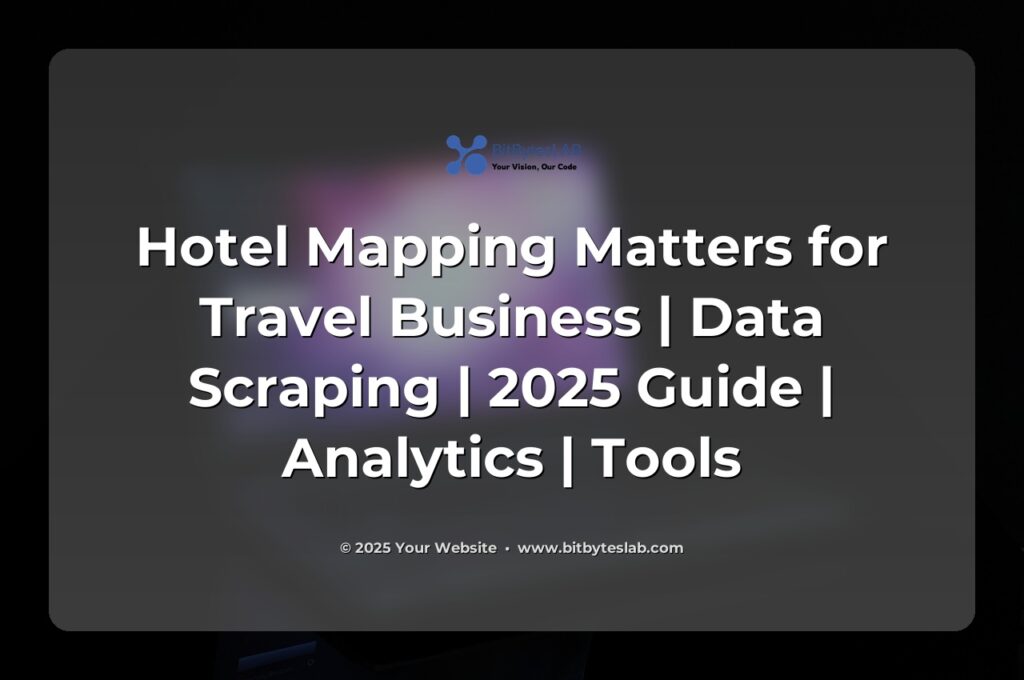In the high‑stakes world of travel, hotel mapping isn’t just a nice‑to‑have feature; it’s the compass that guides pricing, distribution, and customer experience. When you can visualise a competitor’s rate curve or a cluster of luxury properties on a single map, you’re already one step ahead of the game. That map becomes a decision‑making engine, turning raw numbers into actionable strategy. 🚀
Yet most operators still treat hotel data like a spreadsheet—flat, static, and disconnected. The problem? Rushed decisions, missed opportunities, and a blind spot when market dynamics shift overnight. It’s time to move from manual data dumps to automated, geospatially‑driven insights that respond in real time. 🌍
At the core of this transformation lie three pillars: hotel mapping to visualise supply‑demand geography, data scraping to harvest the latest market intelligence, and analytics & insights to translate numbers into revenue‑maximising actions. Combine them with a solid tech stack—GIS libraries, headless browsers, and a spatial database—and you’ve got a scalable, future‑proof system.
🐍 Python is named after Monty Python, not the snake. Now that’s some comedy gold! 🎭

When you integrate a real‑time mapping layer—think Mapbox GL JS or Kepler.gl—into your analytics pipeline, you can spot price anomalies, market saturation, and emerging hotspots in seconds. A simple heatmap can reveal that a handful of hotels in a city are over‑priced, giving you leverage to negotiate better commission rates or push targeted promotions. 🎯
Expert strategies for harnessing this power start with a disciplined architecture. First, schedule autonomous scrapers that respect robots.txt and throttle requests to avoid IP bans. Second, store each record with full provenance: source URL, timestamp, and scraper version. Third, enrich raw data with geocoding and sentiment analysis so that you can correlate location with guest experience. Finally, democratise insights by feeding the data into an interactive dashboard where marketing, pricing, and sales teams can slice the map by brand, seasonality, or demographic.
Industry stats back this up: hotels that leverage live price feeds outperform the market by up to 12% in RevPAR, while those that incorporate sentiment into distribution decisions see a 9% uplift in direct booking share. Those figures aren’t just numbers—they’re ROI, and they’re attainable with the right data foundation.
🔧 Why do Java developers wear glasses? Because they can’t C# 👓

In practice, a hotel chain could deploy a distributed scraper fleet that pulls nightly rates from Booking.com, Expedia, and direct site APIs, feeding them into a PostGIS database. A downstream analytics layer could then run a machine‑learning model that predicts optimal price points by region, taking into account seasonality, local events, and competitor moves. The result? A dynamic pricing engine that reacts in real time, rather than relying on static rate calendars.
Common challenges—CAPTCHAs, rate limiting, infinite scroll, and legal compliance—can be mitigated with a few pro tips. Use stealth‑enabled headless browsers and rotating residential proxies; implement request throttling; design idempotent scrapers that check for last‑modified dates; and always log source URLs and timestamps for auditability. Building a robust data governance framework will also protect your operations from GDPR or CCPA pitfalls.
Looking ahead, 2025 is bringing AI‑assisted scraping, serverless edge crawlers, and GraphQL APIs from major OTAs. These innovations will slashes scraping complexity, reduce latency, and make data more granular than ever. Coupled with real‑time analytics platforms like Superset or Looker Studio, your travel business can pivot instantly to market shifts, turning data into revenue rather than information.
In short, hotel mapping isn’t a luxury—it’s a necessity for any travel business that wants to stay competitive in a data‑driven world. By combining geospatial visualisation, automated scraping, and actionable analytics, you unlock a new level of insight that directly boosts occupancy, RevPAR, and guest satisfaction. If you’re ready to turn raw data into a strategic asset, BitBytesLab is here to help you build a scalable, compliant, and future‑proof data scraping and analytics solution. 💪

